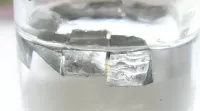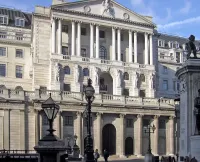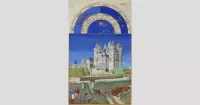The Castellania, or Castellania Palace, is a historical building in Valletta, Malta. Constructed by the Order of St. John from 1757 to 1760, it replaced an older courthouse dating back to 1572. Originally serving as a courthouse and prison, the Castellania now houses Malta's health ministry. Its function has thus evolved from justice and imprisonment to public health administration, reflecting changes in societal priorities over time. The building stands as a landmark representing both the legal history and contemporary governance of Malta.
June 1904: Zammit's Experiments with Goat Milk
In June 1904, during experiments at the Castellania, Zammit discovered that a Maltese family became ill after consuming fresh unpasteurized goat milk, which led to his success in discovering the cause of the disease.
1904: Malta Fever Commission at the Castellania
Between 1904 and 1906, the Malta Fever Commission (MFC) conducted their work within the Castallania.
June 1905: Discovery of Mediterranean Fever Cause
On June 14, 1905, physician Sir Themistocles Zammit discovered the cause of Mediterranean fever while working at the Castellania. The fever was initially traced back to British soldiers fighting against the French occupation of Malta.
1906: Malta Fever Commission at the Castellania
Between 1904 and 1906, the Malta Fever Commission (MFC) conducted their work within the Castallania.
September 1914: Exile of Manwel Dimech
On September 5, 1914, Maltese socialist Manwel Dimech was exiled to Sicily by the Governor of Malta, after being imprisoned at the Castellania. Despite pleas from British officials, he was refused permission to return to Malta. This exile is widely remembered in Malta.
1921: Public Health Department housed at Castellania
From 1921 to 1998, the Castellania housed Malta's Public Health Department (id-Dipartiment tas-Saħħa Pubblika).
1925: Inclusion on the Antiquities List
In 1925, the Castellania was included on the Antiquities List as La Castellania.
1934: End of Self-Government era
Malta's Self-Government era (1921-1934) ended, during which high-profile health decisions were taken at the Public Health Department housed at the Castellania.
1937: Medical and Health Department Combination
In 1937, the Public Health Department was combined with the Medical Department to become the Medical and Health Department.
1938: Mediterranean Fever Under Control
By 1938, Mediterranean fever was brought under control through the enforcement of standard milk pasteurization procedures.
April 1942: Bombing Damage to Castellania
On April 4, 1942, the Castellania and the next door Casa Dorell were damaged during one of the air bombardments during WWII. The Castellania suffered damage on the side of the prison up to a fraction of the front façade.
1970: Painting Transferred to Sala Nobile
In 1970, a copy of a painting by Mattia Preti, portraying Saints Cosmas and Damian, was transferred from St Luke's Hospital chapel to the Sala Nobile (Noble Hall) at the Castellania.
1980: Brucellosis Museum Conversion
In 1980, the laboratory on the Castellania's second floor, previously used by the Malta Fever Commission, was restored and converted into The Brucellosis Museum, which is now open to the public by appointment.
1991: Titular Painting Retrieved
During restoration works in 1991, the titular painting of the chapel, dedicated to Our Lady of Sorrows, was retrieved. The chapel had been deconsecrated in the late 19th century and used for other purposes.
1992: Grade 1 Scheduled Property
Since 1992, the Castellania has been a Grade 1 scheduled property and is listed on the National Inventory of the Cultural Property of the Maltese Islands.
1994: Rising challenge for the department
In 1994 and 1995, the department faced a rising challenge with slaughtering of infected animals.
November 1995: Malta Lithium Symposium Hosted at Castellania
On November 10, 1995, Minister for Social Development, Louis Galea, hosted the participants of the Malta Lithium Symposium from 18 different nationalities at the Castellania to meet with government employees of different ministries and departments.
1995: Rising challenge for the department
In 1994 and 1995, the department faced a rising challenge with slaughtering of infected animals.
October 1998: Ministry for Health Moves to Castellania
Since October 7, 1998, the Ministry for Health has been operating at the Castellania, after relocating from Casa Leoni in Santa Venera. Under the remit of the Health Ministry, there are now around 6,000 workers operating around the country.
2007: Museum Proposal
In 2007, Minister Austin Gatt suggested the establishment of a museum of Maltese legal and political history in the Castellania, but it did not materialize.
June 2017: Façade Restoration Begins
In June 2017, work began on the restoration of the façade of the Castellania, as part of projects for Valletta 2018 – European Capital of Culture, after a detailed study and public tender.
December 2017: Crowding at Customer Care Section
On December 19, 2017, numerous people were given appointments on the same day for burials permission, causing crowding at the customer care section in the Castellania's former prison courtyard. Many clients were asked to leave and given new appointments.
January 2018: Façade Restoration Completed
In January 2018, the façade restoration of the Castellania was completed, in time for Valletta's inauguration as European Capital of Culture. Sculptures that had weathered or broke off were faithfully reconstructed during the restoration.
2018: Window Molding Renovation
In 2018, the hood moulds of the window moldings on Merchants Street, which had been chipped over the years, underwent renovation.
December 2019: Protest Messages at the Castellania
In December 2019, messages related to Government corruption in Malta and the death of Daphne Caruana Galizia were left attached to the door of the Castellania, along with symbolic coal on the doorstep.
Mentioned in this timeline
Sicily the largest and most populous Mediterranean island is an...

Lithium Li atomic number is a soft silvery-white alkali metal...
Malta is a Southern European island country situated in the...
Time is the continuous irreversible progression of existence from past...

A bank is a financial institution that plays a crucial...

September is the ninth month of the year in the...
Trending

3 months ago Pat Bryant impresses as Broncos' potential steal, focusing on learning and earning his spot.

Ayesha Curry is a multifaceted Canadian-American businesswoman chef restaurateur and actress Her culinary career started with a YouTube demonstration in...

Sam Darnold is an American professional football quarterback currently playing for the Seattle Seahawks in the NFL He was a...
3 months ago Tyquan Thornton Impresses, Forcing His Way Into Chiefs' Week 1 Plans
Alex Singleton is a Canadian-American professional football linebacker currently playing for the Denver Broncos in the NFL He went undrafted...

4 months ago Deion Sanders excited to rejoin Colorado, praises Joey McGuire, addresses health concerns.
Popular

Chuck Schumer is the senior United States Senator from New...

Bernie Sanders is a prominent American politician currently serving as...

XXXTentacion born Jahseh Dwayne Ricardo Onfroy was a controversial yet...

Candace Owens is an American political commentator and author known...

Cristiano Ronaldo often nicknamed CR is a Portuguese professional footballer...

Nancy Pelosi is a prominent American politician notably serving as...